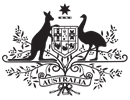THE HON MARK DREYFUS QC MP
Cabinet Secretary
Parliamentary Secretary for Climate Change and Energy Efficiency
Parliamentary Secretary for Industry and Innovation
MEDIA RELEASE
ENVIRONMENTAL PLANTINGS CUT POLLUTION AND EARN CARBON CREDITS
UNDER CARBON FARMING INITIATIVE
Australia's first environmental planting projects have been registered under the Gillard Government's Carbon Farming Initiative, which rewards landholders for cutting or avoiding carbon pollution on the land.
Victorian farmers, Peter and Christine Forster, have been direct seeding marginal land on their 800 hectare property with local native species such as Red Gum and Black Wattle since 2010, and are now sequestering approximately 4.5 tonnes of carbon emissions per hectare per year.
Parliamentary Secretary for Climate Change and Energy Efficiency, Mark Dreyfus, today visited the Forster's Bullock Hills property, south of Ararat in Victoria's Western District.
"The Bullock Hills Direct Seeding Project is an excellent example of how Australian farmers can improve their land and local environment while contributing to Australia's reduction of harmful carbon pollution," said Mr Dreyfus.
"Droughts, storms and fires are all intensified by the effects of climate change and are potentially very damaging to Australia's agricultural sector, which is why the Gillard Government is taking practical steps to cut heat-trapping carbon pollution.
"Carbon farming projects, such as this, strengthen the land and generate carbon credits which provide extra income for farmers who can sell them to heavy polluting businesses that need to offset their carbon emissions," said Mr Dreyfus.
The Bullock Hills project uses the Environmental Plantings of Native Species Methodology, one of seven approved methodologies under the Carbon Farming Initiative. The carbon sequestered is calculated using the Reforestation Modelling Tool.
"The plantings, which cover 32 ha of our farm, are reducing soil erosion and dryland salinity, and improving the health of the Hopkins River. The trees create biodiversity benefits and will provide much needed shade and shelter for livestock," said Christine Forster.
"We have been planting trees for 30 years for multiple farming, environmental and biodiversity benefits. About 25% of the farm is revegetated with local native species."
"We are in the midst of an extremely hot summer - a stark reminder to all Australians that responsible action to tackle climate change cannot be dismissed or avoided," said Mr Dreyfus.
Further information on the CFI is available on the Department of Climate Change and Energy Efficiency website.
WEDNESDAY, 23 JANUARY 2013



